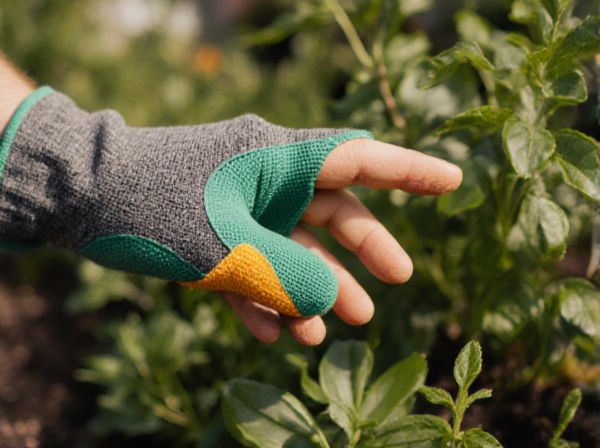
Handpicking vs Trapping Illustration
Handpicking pests allows for precise removal of individual insects, minimizing harm to beneficial species and the environment. Trapping is effective for monitoring pest populations and controlling infestations by capturing multiple pests simultaneously without chemicals. Choosing between handpicking and trapping depends on pest type, infestation level, and garden size for optimal pest management.
Table of Comparison
| Method | Handpicking | Trapping |
|---|---|---|
| Definition | Manually removing pests from plants | Using traps to capture pests |
| Effectiveness | Effective for small infestations | Effective for monitoring and controlling pest populations |
| Target Pests | Large insects like caterpillars and beetles | Flying insects like flies, moths, and beetles |
| Labor Intensity | High labor required | Low labor after setup |
| Environmental Impact | Eco-friendly, no chemicals | Eco-friendly, non-toxic traps available |
| Cost | Low cost, mainly labor | Moderate, upfront trap purchase |
| Suitability | Best for small gardens and precise control | Suitable for large areas and ongoing pest management |
Introduction to Handpicking and Trapping Methods
Handpicking involves manually removing pests from plants, providing immediate control that targets specific insects without harming beneficial species. Trapping uses devices baited with attractants to capture pests, offering continuous monitoring and reducing pest populations effectively. Both methods are eco-friendly alternatives to chemical pesticides, promoting sustainable pest management.
Understanding Common Garden Pests
Handpicking allows gardeners to directly remove pests such as beetles, caterpillars, and aphids from plants, providing immediate control without chemicals. Trapping targets specific garden pests like slugs, cutworms, and fruit flies by using baited traps or pheromone lures to monitor and reduce populations effectively. Understanding the behavior and life cycle of common pests enhances the efficiency of both handpicking and trapping methods in sustainable garden pest management.
Pros and Cons of Handpicking Pests
Handpicking pests offers a chemical-free approach, ensuring no harmful residues affect plants or beneficial organisms, making it ideal for organic gardening. This method provides immediate removal and precise targeting of individual pests such as caterpillars or beetles but can be labor-intensive and inefficient for large infestations. While handpicking reduces pesticide resistance risks, its effectiveness is limited by time constraints and accessibility to pests in dense foliage.
Advantages and Limitations of Trapping
Trapping offers a targeted and chemical-free method for managing pests, effectively reducing infestations without harming the surrounding environment. It allows continuous monitoring and early detection of pest populations, helping to prevent extensive damage. However, trapping may require regular maintenance and can be less effective for large-scale infestations or fast-reproducing pests due to limited capture capacity.
Best Situations for Handpicking Pests
Handpicking pests is most effective in small gardens or localized infestations where pest populations are manageable and easily visible. It works well for pests like caterpillars, beetles, and slugs on low-growing plants or leafy vegetables, allowing for immediate removal without chemical use. This method is ideal for organic gardening practices and situations requiring precise pest control with minimal environmental impact.
Effective Types of Traps for Garden Pests
Effective types of traps for garden pests include pheromone traps, which attract specific insect species by mimicking their mating signals, and sticky traps that capture flying insects like whiteflies and aphids. Light traps utilize ultraviolet light to lure nocturnal pests such as moths, while bait traps use attractants related to the pests' food preferences, targeting species like slugs and beetles. Deploying these targeted traps helps minimize pest populations while reducing reliance on chemical pesticides.
Safety and Environmental Impact Comparison
Handpicking pests offers a chemical-free method that minimizes harm to beneficial insects and reduces environmental contamination, making it safer for gardens and surrounding ecosystems. Trapping techniques, while also targeted, can pose risks if non-selective traps harm non-pest species or involve toxic baits, potentially impacting local wildlife and soil health. Choosing handpicking supports organic pest control by avoiding chemical residues, whereas traps require careful management to ensure environmental safety and reduce unintended ecological consequences.
Cost and Time Investment: Handpicking vs Trapping
Handpicking pests requires minimal upfront costs but demands significant time investment, making it labor-intensive for large infestations. Trapping involves higher initial expenses for purchasing traps but reduces ongoing labor, offering a more time-efficient solution. Choosing between handpicking and trapping depends on pest population size and budget constraints.
Combining Methods for Integrated Pest Management
Combining handpicking and trapping enhances pest control efficiency by reducing pest populations through targeted removal and continuous monitoring. Integrated Pest Management (IPM) leverages handpicking to physically eliminate pests like beetles and caterpillars, while traps capture flying insects such as moths and fruit flies. This synergy minimizes chemical pesticide use, promoting environmental sustainability and protecting beneficial organisms.
Choosing the Right Method for Your Garden
Handpicking pests offers precise control for delicate plants, minimizing chemical use and environmental impact, making it ideal for small gardens or light infestations. Trapping is effective for managing larger pest populations, using bait or pheromone traps to capture insects like moths or beetles while reducing non-target species harm. Selecting the right method depends on pest type, garden size, infestation severity, and the need for sustainable pest management practices.
Handpicking vs Trapping Infographic

 gardendif.com
gardendif.com